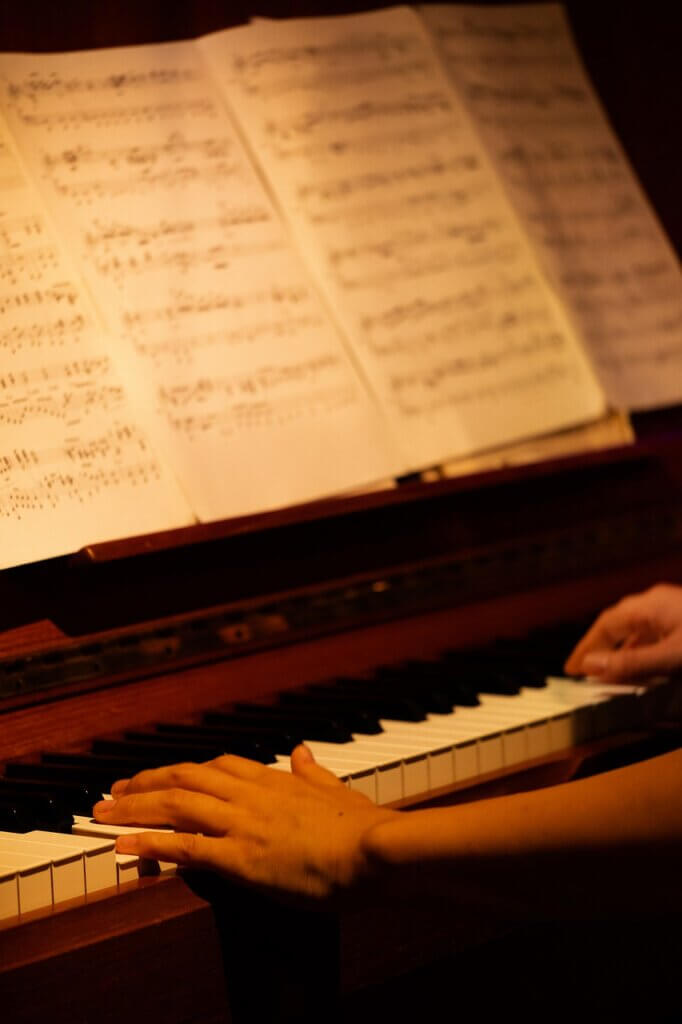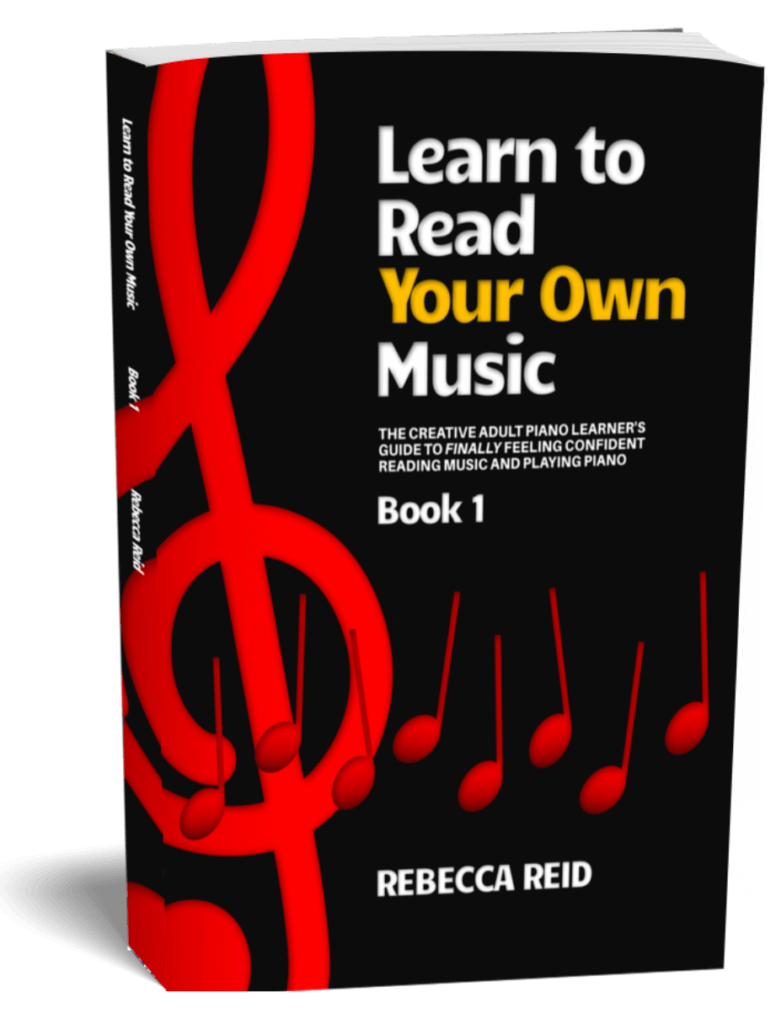How to Read Music for Piano
Everything you need to know so you can start reading sheet music and playing piano!
The Basics of Reading Music
When learning to read music, there are 3 main things you need to master: the layout of the piano keyboard, how to read rhythms, and how to read pitches.
- Learn to Read Piano Notes: A Beginner's Guide to Reading Sheet Music
An introduction to the basics of reading piano notes on sheet music. Start here to get an overall sense of what you need to know about sheet music and reading music for piano. You'll learn about pitches, rhythms, and other important elements of music written in sheet music. - Learn the Piano Keys (for Adult Beginners)
Your first step is to learn the layout of the piano keyboard. How many keys are there on a piano? What are the names of the keys? How can you tell which key is which? - Learn to Read Music: How the Music Staff Works
Next you need to learn how the music staff works. What are all those little lines and symbols? And how to they relate to the keys on the piano? - Time Signatures and Meter: A Beginner's Guide
Your third step is to learn about time signatures. What do 4/4, 3/4 and 2/4 mean? - Rhythm for Beginners: 8 Basic Rhythms You Must Master in 4/4 Time
Now that you understand time signatures, it's time to learn about note values. Start by learning about whole notes, dotted half notes, half notes, and quarter notes. - How to Draw the Treble Clef and the Bass Clef Like a Pro
Now that you understand how to read rhythms, the next step is to learn to read pitches on the music staff. Believe it or not, learning to draw the treble clef and the bass clef will help you learn to recognize which notes on the music staff relate to which keys on the piano! - Learn to Read Music: Introduction to Guide Notes Level 1
Your next step is to master your first 3 guide notes: bass F, middle C, and treble G. Mastering these 3 notes will give you a solid foundation for learning intervallic reading, which is one of the best strategies for reading music quickly and easily.
More Advanced Concepts for Reading Music
Once you've mastered the basics of reading music, you're ready to move on to some more advanced concepts.
- Understanding the 6/8 Time Signature
Once you're comfortable playing simple pieces in time signatures like 2/4, 3/4, and 4/4, you're ready to learn about compound meter and explore the 6/8 time signature! - Ledger Lines in Music: How to Read and Play Ledger Line Notes for Piano
If you're confident playing notes on the grand staff, all the way from low G to high F, you might be ready to learn how to read and play ledger lines. Ledger line notes will help you expand the range of pitches you can play on the piano, and open up a whole new world of sheet music you can play. Learn about ledger line notes above and below the treble and bass clef staves.
Practice Strategies to Help You Feel More Confident Reading Music
Once you've learned the basics of reading music, it's time to start practicing!
- Will Piano Key Stickers Help Me Learn to Play Piano?
Find out what I think about piano key stickers, and learn about a tool that works much better than stickers when it comes to mastering the layout of the piano keyboard. - How to Practice Rhythm for Piano Without Dying of Boredom
No matter how excited you are about learning piano, there are bound to be moments when the repetition starts to feel a bit boring. Find out some creative ways to liven up your rhythm practice and have some fun!

Need more practice understanding your piano?
My free online course, Confused Beginner to Confident, Creative Piano Learner, is designed to help you develop a strong foundation with the basics you need to master before you can start learning to read music on the staff.
How to choose the best piano for your needs? How to sit at the piano? Which key is a C?
Learn and practice all this and more by exploring your creative side and creating your own simple melodies.

Need more practice reading music?
Designed especially for adult learners, my workbook, Learn to Read Your Own Music Book 1 (available on Amazon), teaches about the music staff, rhythm, pitches, guide notes, and the intervallic approach to reading music.
It includes sample musical excerpts as well as simple composition exercises to help you use your creativity to practice applying the knowledge you've gained.
With this practice, you'll be able to read music with much more confidence!
Free Music Reading Resources
Sign up for any of the resources below to join the VIP club and get your free music resources delivered straight to your inbox. VIP members receive emails jam-packed with useful piano tips.
